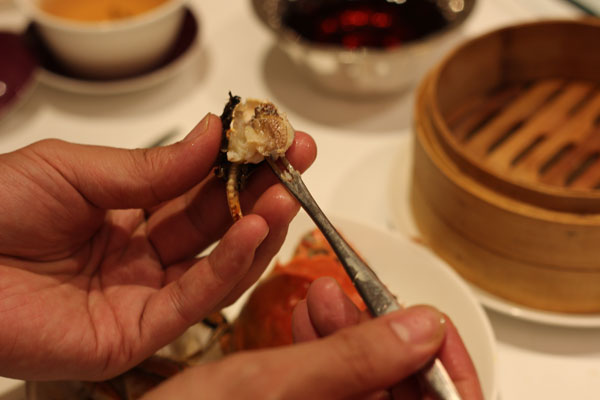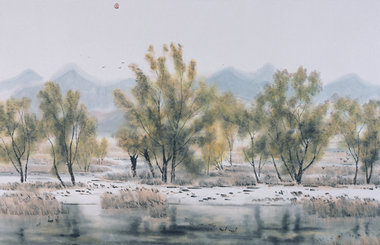Mad about crabs
By Dong Fangyu ( China Daily ) Updated: 2014-10-25 07:38:41
 |
|
A pick (left and right) is a fancy digging tool to pull off legs and claws, and to pick out the meat and roe. |
The matsutake and mitten crabs are gastronomic reminders of the golden autumn season. Matsutake, also known as pine mushrooms, are prized for their enticing scent, often referred to as "intense", or "pine-like" or "cinnamon-like".
When it comes to cooking matsutake, less is more.
Victor Hu, Noble Court's master Chinese chef, advises not to wash them much or flavor will be lost: Simply wipe the mushrooms with a damp cloth or paper towel. His soup does not have additional seasonings except salt, but the pure broth can be a sensory adventure.
The most traditional way to cook hairy crabs is to steam them, a technique that the chefs of Noble Court embrace to preserve the crabs' innate flavor.
Male crabs have bellies that are somewhat triangular, while females have more oval bellies. We were served male specimens, which are bigger and meatier. Each weighs almost 5 liang (250g), heavier than the market average of about 2 to 4 liang each. And the heavier, the tastier, says Hu. The hairy crabs at Noble Court, the chef says, all come from Yangcheng Lake. Although hairy crabs from other places have been discovered, he believes those from Yangcheng Lake are still superior.
Hu notes that crab farming at Yangcheng Lake has developed into a regulated industry, and the local government is very strict about the water quality and what crabs are fed there. These farms are strictly licensed.
Because of the pleasant climate, clear water, fertile land and the quality water grass and plants the crabs eat, authentic Yangcheng Lake crabs taste better than other varieties," he said. One diner at the restaurant added that this crab is "sweeter than normal ones".
|
|
|
|
|
|
|
|

























 Raymond Zhou:
Raymond Zhou: Pauline D Loh:
Pauline D Loh: Hot Pot
Hot Pot Eco China
Eco China China Dream
China Dream China Face
China Face






